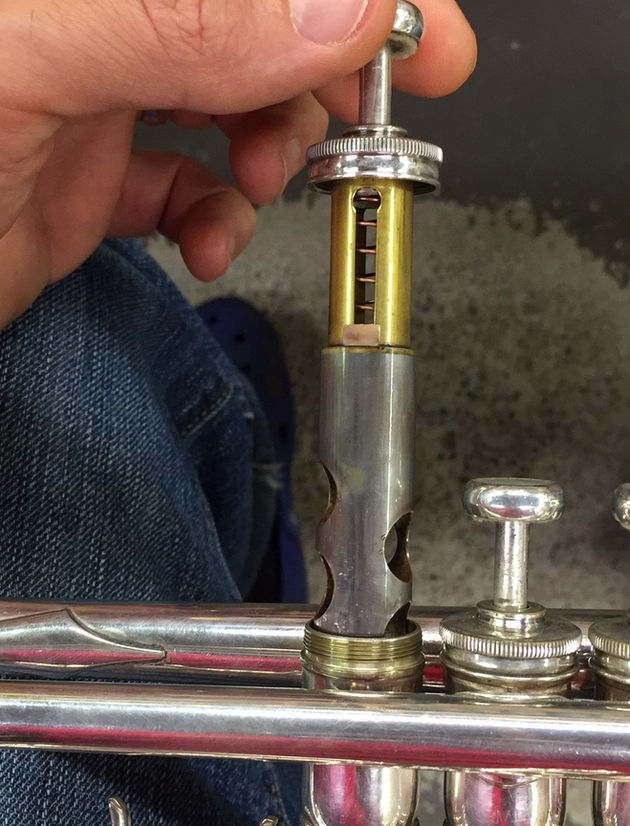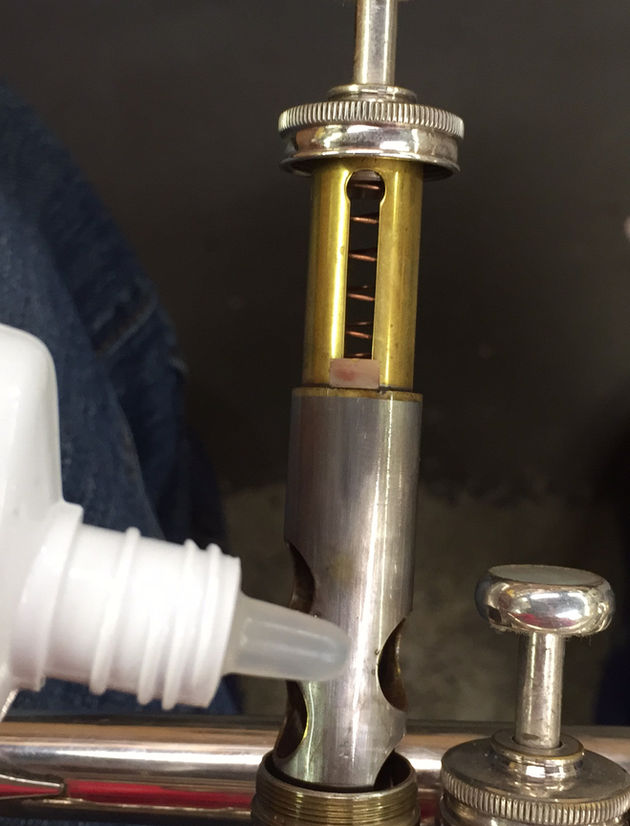Oiling your valves.
- Jeremy Stringer
- Oct 2, 2016
- 2 min read
Updated: Dec 11, 2022
School has started and now is the time when the newest recruits have begun their journey of learning a new instrument! I've been getting a number of inquiries about the proper way to oil piston valves on a brass instrument. So, this is the way I teach young kids how to oil trumpet valves. These steps can be applied to other larger instruments as well.
Step 1:
Sit to the front of your chair with feet flat on the floor. Place trumpet on your lap.

Step 2:
Loosen valve cap, not the valve finger button. "Lefty loosey".

Step 3:
Once cap is removed from threads, remove valve from casing, but only part way. I tell students to leave it in for two reasons. First, if they take the valve out all the way, there is a higher likelihood they will drop it. Second, by leaving it in, the oil will naturally go where we want it. It'll slide down the valve, into the casing.

Step 4:
Oil the valve. It is not necessary to oil the spring or the valve guide or any other part of the valve other than the silver colored valve. The oil acts as a slippery membrane between the outside of the valve and the inside of the valve casing. Therefore, oiling in the holes is also not necessary. A few drops of oil will do. Also, try keep the valve section over the gap between your knees. This will help keep oil off your pants in the event some drips off of the valve.

Step 5:
Return valve back inside the casing while spinning to ensure the oil is evenly distributed across the entire valve. NOTE: This step can be different depending on the instrument. Larger instruments such as baritone or tuba require you to align the valve guide into the valve guide slot located in the valve casing. Trumpets are easy and only require you to turn the valve until it stops spinning. You will hear and feel it click when valve is in the correct spot. Just keep spinning, spinning, spinning. ;)
Step 6:
Replace valve cap to its original position. "Righty, tighty". Be sure cap is on straight before screwing it back on. Brass is a very soft metal and the threads of the valve casing can be damaged quite easily. Like with any musical instrument, never force anything. If something doesn't feel right, stop and ask for help.
Step 7:
Repeat on other valves.
Step 8:
Go practice! :)






